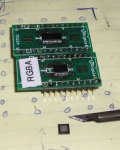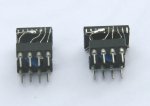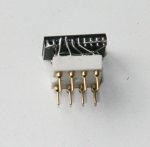Buzby
Senior Member
Hi All,
I've got a pair of 28pin TSSOP chips I need to solder to DIL adapter boards,
There are hundreds of posts on here about soldering SMDs, but I want the definitive solution to my specific situation.
I've only got two chips to fix, so I'm not looking for the 'whole board' solution.
The pins don't look too small. I could maybe solder by hand, with a lot of solder wick at the ready.
( This post is PICAXE related. The two chips are rather cool samples from MAXIM that I hope will fit nicely with PICAXE. )
What does the panel think ?
Cheers,
Buzby
I've got a pair of 28pin TSSOP chips I need to solder to DIL adapter boards,
There are hundreds of posts on here about soldering SMDs, but I want the definitive solution to my specific situation.
I've only got two chips to fix, so I'm not looking for the 'whole board' solution.
The pins don't look too small. I could maybe solder by hand, with a lot of solder wick at the ready.
( This post is PICAXE related. The two chips are rather cool samples from MAXIM that I hope will fit nicely with PICAXE. )
What does the panel think ?
Cheers,
Buzby




